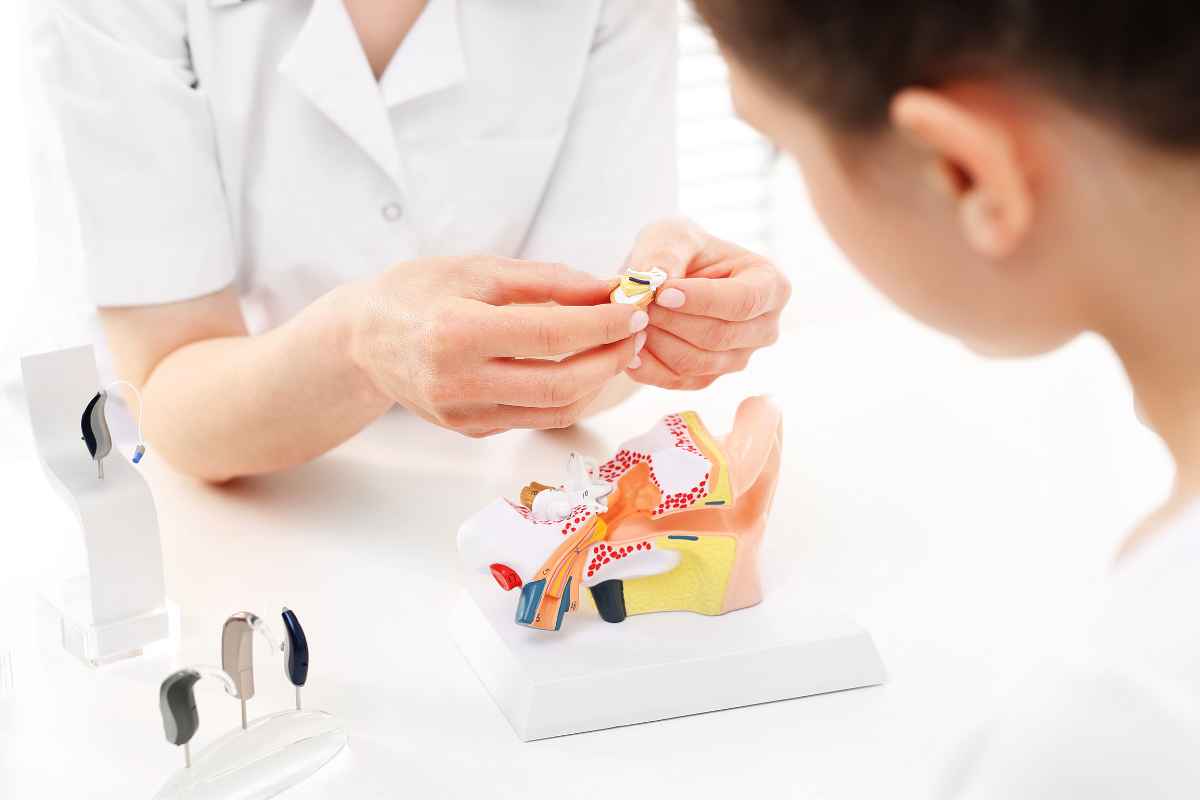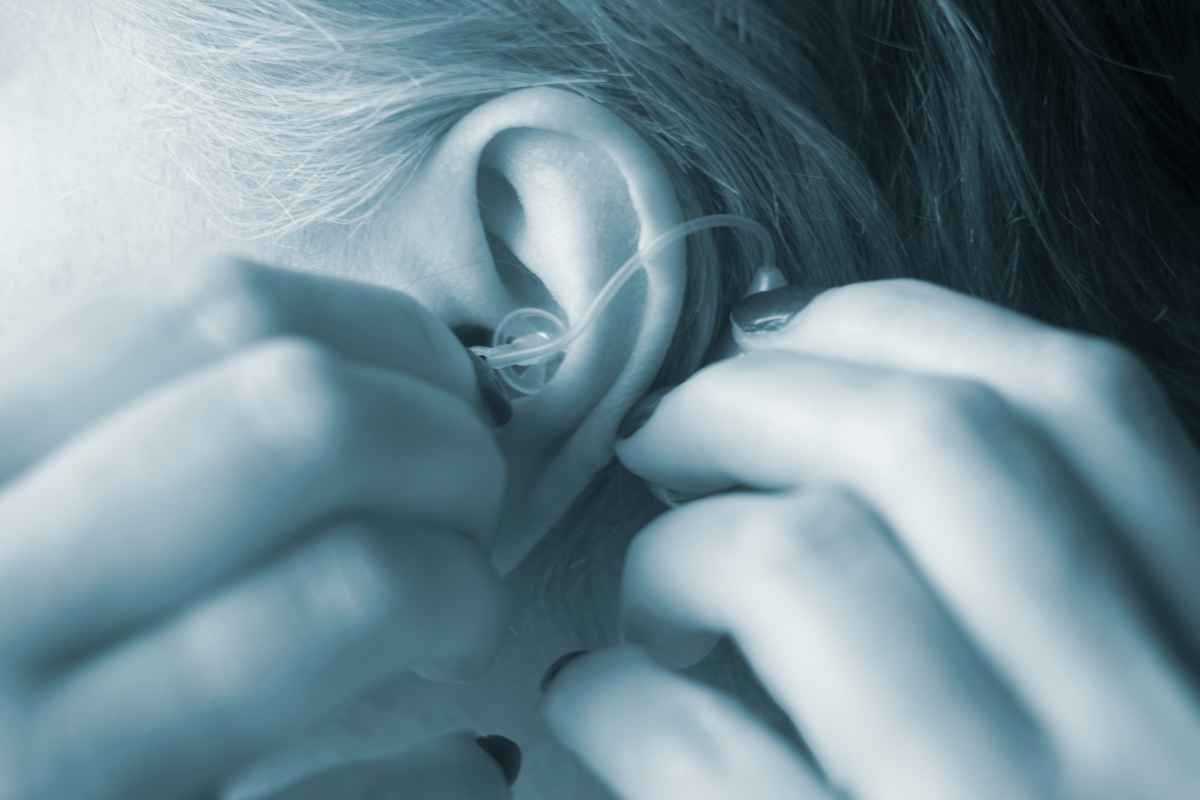Our ears are sensitive and can easily be harmed by loud noises or through physical contact. It’s therefore important to always be careful when putting objects like hearing aids or ear plugs in your ears.
Although it is possible to push a hearing aid too far into your ear, the way they are designed should prevent this from happening. Hearing aids are commonly custom molded to suit the shape and dimensions of your ear, and as a result it should be difficult to push them deep into the inner ear.
Nevertheless, it’s important to avoid using too much force when you’re putting your hearing aids in, as you could easily aggravate the inside of your ears.
In this article, we’ll cover the ways that hearing aids should be used and what to avoid when wearing them.
What Happens When a Hearing Aid Is Pushed Too Far?
A hearing aid should be optimally designed to fit into the user’s ear, and this should in theory, prevent it from being pushed in too far. However, if you’re careless and don’t exercise caution when inserting your hearing aids, it is possible to push them in too far.
If this does happen, it’s important to take the device out immediately. Doing so will prevent any harm from being done to your ear, such as scratches or irritation. You may also experience some discomfort in your ear if the hearing aid is pushed too far.
In some very rare cases, a hearing aid may become stuck due to being pushed too far into the ear canal. If this happens, then it’s best to seek medical assistance to safely remove the device.

How to Correctly Insert a Hearing Aid
To avoid pushing a hearing aid in too far, or any other issues, it’s important to understand how to properly insert the device into your ear.
Ideally, you want the hearing aid to fit snugly inside your ear so that it doesn’t come loose but not so tightly that it causes you any discomfort.
The best way to do this is to hold the hearing aid at an angle and slowly insert it into your ear, taking care not to use too much force. It also helps to wiggle the device while inserting it, as this will make sure it fits properly.
Once the hearing aid is in, you should check that it’s comfortable and securely fastened. Then, you can turn it on and adjust the volume settings to your preferred settings.
How to Avoid Pushing a Hearing Aid in Too Far
To avoid pushing your hearing aid in too far, there are several measures you can take.
Firstly, you should always take your time when inserting your hearing aid to ensure that you’re doing it correctly. Secondly, you should check the fit of the hearing aid after you’ve inserted it and make any necessary adjustments.
Finally, you should pay close attention to the way your ears feel when you’re wearing your hearing aids. If you experience any discomfort or pain, then it could be a sign that the hearing aid is too deep in your ear canal. In this case, it’s best to remove the device and adjust its fit accordingly.

When to Seek Advice from a Professional
If you’re having any difficulties with your hearing aid, it’s important to consult a qualified audiologist. They will be able to advise you on the best way to correctly insert and adjust your hearing aid so that it fits properly.
Furthermore, they may be able to suggest other solutions for any hearing aid-related problems. For example, they may recommend a different type of hearing aid or a different style of earpiece.
Whatever the case, it’s important to seek professional advice if you’re unsure of how to insert your hearing aid correctly or if you’re having any issues with it.
You may find that you need to get another set of custom molds made for your hearing aid if your ear canals change shape over time. This is common in the elderly and people who have had ear surgeries.
Maintenance Tips for Your Hearing Aid
Taking care of your hearing aid is essential for ensuring that it lasts for as long as possible. Here are some tips for maintaining your hearing aid:
• Clean your hearing aid regularly. This includes wiping it down with a dry cloth, using a hearing aid cleaning brush, and using a vacuum cleaner attachment to remove any wax build-up.
• Check your hearing aid for any damage or irregularities. If you notice any issues, have them addressed by a professional.
• Avoid exposure to water and extreme temperatures.
• Store your hearing aid in a dry place when it’s not in use.
• Have your hearing aid regularly serviced by a professional.
• Make sure to change the battery as soon as it starts to run low.
• Don’t try to fix any hearing aid-related problems yourself.
Following these tips will help to ensure that your hearing aid is in good working order and that it lasts for as long as possible. If you look after the device, there’s no reason why it shouldn’t last for many years.
Related Questions
What are the common causes of a hearing aid getting pushed too far into the ear?
The most common cause of a hearing aid getting pushed too far into the ear is using too much force when inserting it. This can occur if you’re not careful or if you don’t use the correct angle when inserting the device.
How can a hearing aid user tell if their device has been pushed in too far?
If a hearing aid user notices any discomfort or pain when wearing the device, it could be a sign that it has been pushed in too far. In this case, they should remove the device and adjust its fit accordingly.
Can pushing a hearing aid too far cause any damage to the device or the ear?
Pushing a hearing aid, or any other object too far can indeed cause damage to the device or the ear. This is why it’s important to take care when inserting your hearing aid and seek professional advice if necessary.
